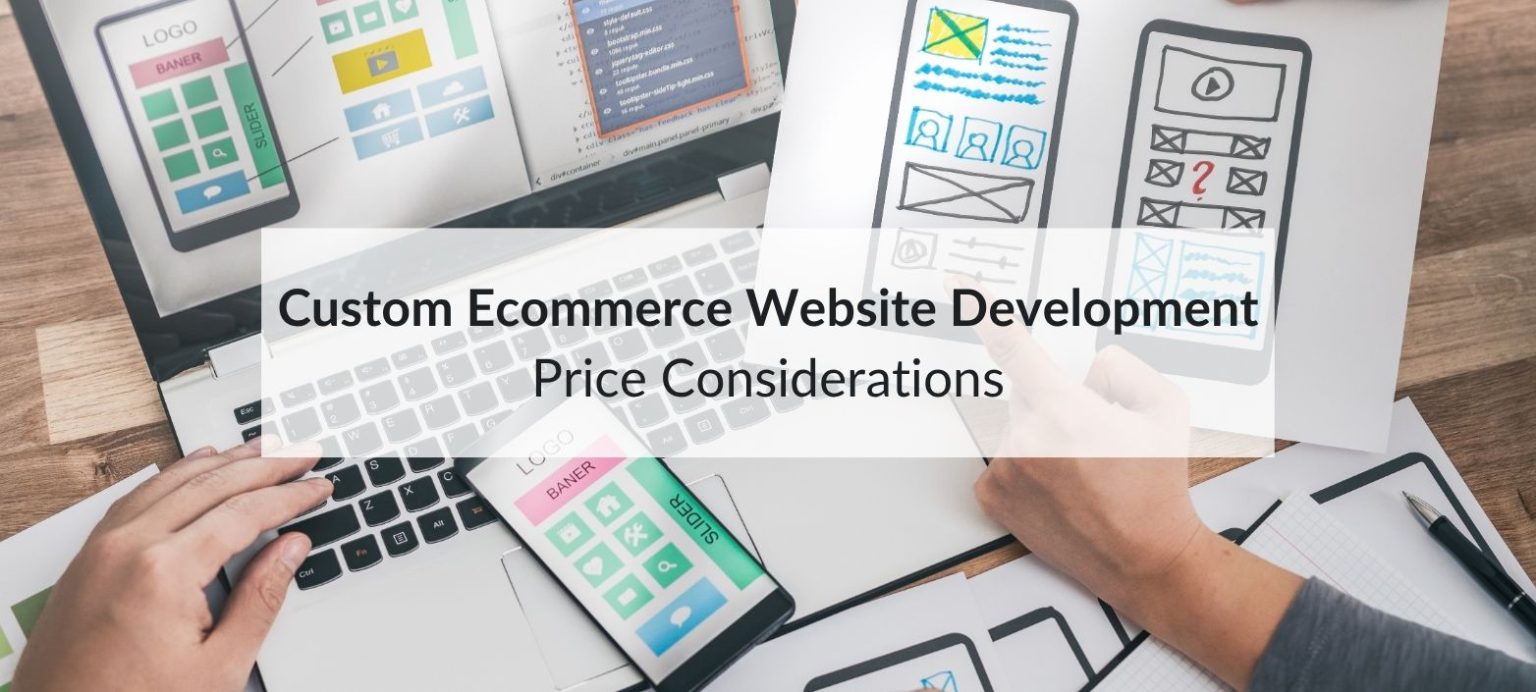Building a custom ecommerce website is a major step for any business looking to create a tailored, high-performing online store. From advanced features to platform-specific development, the investment required depends on the complexity of the project and the team behind it. Taking the time to understand what drives the cost ensures more accurate budgeting and helps align expectations with what’s realistically achievable.
What Influences the Cost of Custom Ecommerce Development?
Custom ecommerce websites are tailored to fit specific business models, branding, and operational requirements. Because they’re built from the ground up or heavily modified from existing platforms, the development process requires careful planning, design, coding, testing, and optimisation.
1. Choice of Ecommerce Platform
The base platform affects both upfront and ongoing costs. For instance:
- Magento (Adobe Commerce): Suitable for complex, scalable ecommerce builds, but requires more development resources.
- Shopify Plus: Offers flexibility with lower development time, but comes with monthly SaaS fees.
- WooCommerce: More budget-friendly for small businesses, but may require frequent plugin management.
Example: A Magento build for a fashion retailer with multi-language support and advanced filtering could start at £25,000, while a WooCommerce build for a single-product store might cost under £5,000.
2. Design Complexity
Custom design costs depend on how unique the site needs to be. A fully bespoke design (not based on a pre-built theme) requires wireframing, prototyping, branding, UX strategy, and frontend development.
Design fees alone can range from:
- £2,000–£5,000 for semi-custom designs
- £6,000–£15,000+ for bespoke design with animations and advanced UI components
3. Features and Functionality
The more complex the functionality, the higher the cost. Considerations include:
- Product customisers
- Multi-currency and multi-language setups
- Subscription models
- Integration with ERPs, CRMs, or shipping APIs
- Customer portals or B2B pricing
Each integration or custom module adds time and development cost.
Example: Integrating a warehouse management system (WMS) with real-time stock syncing can add £3,000–£7,000 to the project.
4. Backend Development and Custom Modules
Custom ecommerce website development often includes building unique backend features, such as custom discount rules, vendor dashboards, or automated workflows. These features require careful planning, testing, and documentation, increasing both time and cost.
5. Ongoing Maintenance and Support
Beyond the launch, there are recurring costs:
- Hosting (dedicated or cloud-based)
- SSL certificates and security monitoring
- Version updates and patching
- Technical support retainers
Example: A store built on Magento may require a support retainer of £500–£2,000/month for maintenance, especially if it handles high order volumes.
Pricing Breakdown: A General Overview

How to Budget Effectively
1. Prioritise Functionality
Start by defining your essential features, like what your store needs to function from day one. These might include product catalogues, checkout, payment gateways, and responsive design. Optional features like advanced filtering or loyalty systems can be added after launch to avoid overspending upfront.
2. Choose a Specialised Agency
Working with an ecommerce-focused development agency ensures your platform is built with conversion and scalability in mind. For example, 5MS specialises in Magento development and support, offering tailored solutions based on your business goals, industry, and growth stage.
3. Plan for Growth
Think beyond launch. Your site should be able to support more products, higher traffic, and new sales channels in the future. Choose a platform and development team that build for flexibility, so you don’t face expensive rebuilds later.
4. Leave Room for Marketing and SEO
A well-built site still needs visibility to succeed. Allocate part of your budget to SEO, paid search, email marketing, and launch campaigns. This ensures your store not only functions but also attracts and converts the right audience from the start.
Conclusion
Custom ecommerce website development is a significant investment, but one that often leads to higher conversions, better performance, and fewer limitations compared to off-the-shelf solutions. Costs will vary based on platform, complexity, integrations, and long-term support needs.
By working with experienced developers, setting clear goals, and defining a realistic scope, businesses can launch an online store that not only looks good but performs effectively without overspending or underdelivering.

